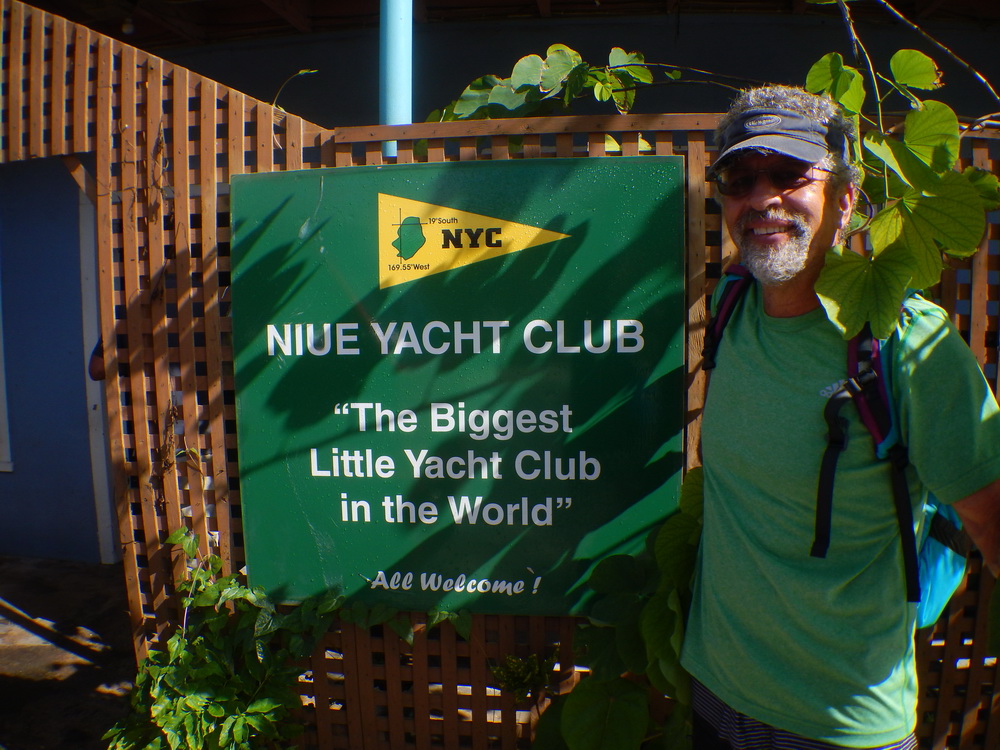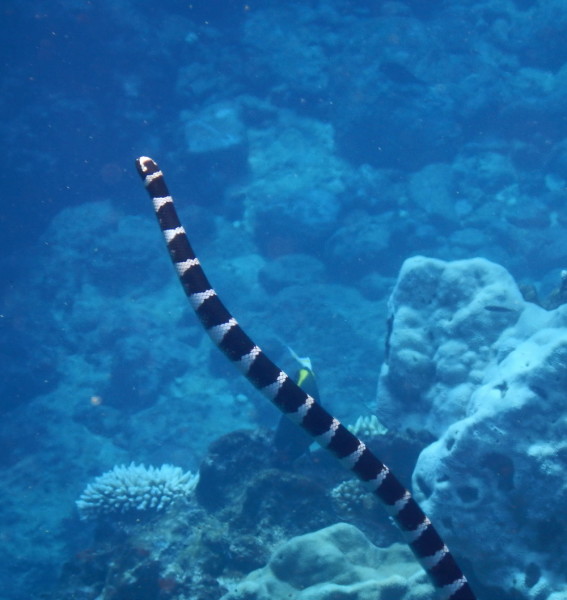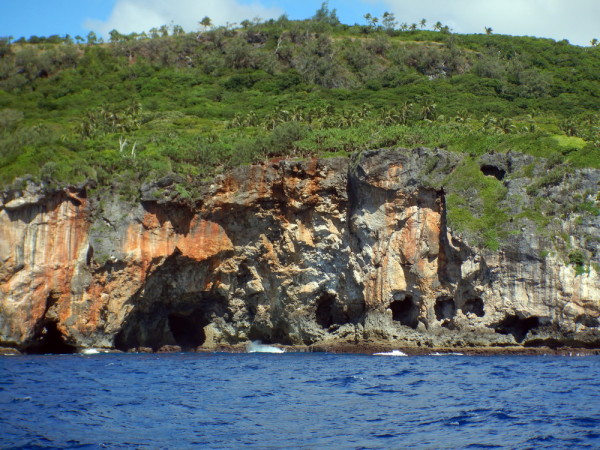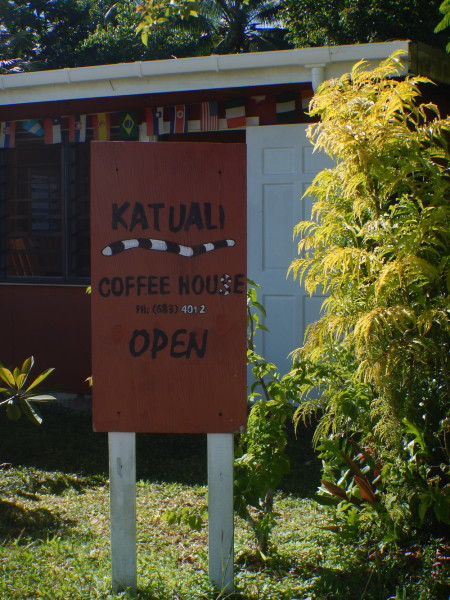Published in the Ocean Watch column, Honolulu Star-Advertiser © Susan Scott
April 21, 2014
One of the most satisfying moments in a sailor’s life is tying the boat to a safe mooring in a calm harbor after a long period at sea. Even a day after arriving here at Niue (pronounced NEW-ay), Craig and I are still high-fiving. We’ve completed the longest leg of our two-month voyage across the South Pacific: 1,200 miles in nine days.
 Craig in Niue.
Craig in Niue.
©2014 Susan Scott
Niue is one of the smallest countries in the world. Although the island’s lush green jungles, limestone cliffs and shoreline reefs are stunning to behold, it’s tough to make a living on an isolated island only 100 square miles in area. The population, according to the friendly immigration officer (who attended Brigham Young University in Laie), is about 1,200. Approximately 12,000 Niueans live in New Zealand; another 12,000 reside in Australia.
Niue is famous among geologists because it’s the largest of its kind: an ancient sunken atoll raised 220 feet above sea level by a flexing of the tectonic plate below. The result is a saucer-shaped island, the center depression formerly being the atoll’s lagoon.
Because Niue’s land consists of porous rock, the island has no rivers and therefore no runoff. The result is perfectly clear water to 100 feet.
The perimeter of Niue consists of steep limestone walls pocked with caves. Below the caves and rocky headlands grow countless dinner-plate-size corals in brilliant pinks, blues, greens and yellows, a sight to behold from the cliffs above.
Getting down to swim in this stunning flower garden is a challenge. Niue has only a few short, narrow sand beaches accessible only where residents have built steps in the cliffs. At the bottom of the steps, the unchecked surf pounds the shore.
But it was well worth the effort to maneuver the surge and haul my body over the rocks. I wasn’t in the water 10 minutes before sea snakes appeared.
Niue is famous for a sea snake known locally as “katuali.” Like many Pacific islanders, the residents here are protective of their sea snakes, quickly pointing out that, yes, their bite is poisonous but that these snakes don’t bite humans.
“They’re not aggressive, just curious,” said the gracious owner of the Niue Yacht Club. “Our katuali don’t bite people.”
It was easy to see why these creatures are revered as I watched three katuali ripple near the outer edges of the reef like shimmery ribbons. The banded black-and-white snakes swam straight up the blue water column to the surface, took a breath of air and plunged straight back down 100 feet to resume their fish hunt
 Kautali, Niue Banded Sea Snake.
Kautali, Niue Banded Sea Snake.
©2014 Susan Scott
There was no missing these standout creatures or mistaking them for eels. Nor did they generate the slightest fear. The three snakes I saw ignored me completely. One curious katuali swam to Craig and, like the woman predicted, looked him over and then went on its way.
You don’t have to have a sailboat to visit this distinct island nation. Niue residents warmly welcome visitors by air with charming guesthouses, restaurants (one called Katuali Cafe) and a visitor center. Niue may be small, but it’s huge in its blend of Polynesian/New Zealand hospitality. Even the sea snakes here are friendly.
For more pictures of Niue visit this Flickr group: https://www.flickr.com/groups/niue/

